Table of Contents
Follow Ups and dissemination
How to support the participants back into "normal life"?
It can be very difficult to absorb a new experience into our life: it requires time and effort. A Heterotopia Tour is an intense experience that moves and challenges participants – both mentally and emotionally – on several levels at the same time. Hence, the participants will need to get support after the Tour, to encourage them to implement the changes they want to see in their daily life.
To help the participants become more aware of what they have learned, how they went through the learning process and how they can put their knowledge into practice it is essential to gather them several times after their return and feed their thinking through assessment activities.
The impact of a Heterotopia Tour on a person is not easy to assess and describe, especially for a person who is not used to non-formal education and self-evaluation. Most of the participants will need your support to recognize and put into words the abilities they have worked on and acquired.
These assessment activities will allow the participants to:
- feel part of a group again
- remember what happened and reconnect with the experience they went through
- express themselves, confront their points of view and discuss all the advantages and disadvantages of the experience
- take stock of their learning outcomes
- start to focus on the future and what initiatives they want to take with the support of their peers and the organization
- evaluate again the Tour, with a more objective approach
A personal interview as additional assessment activity is an opportunity for each participant to express him or herself in a more intimate way and to rethink and refine their individual development plan with the support of the organization.
We recommend you keep using non-formal education during these meetings, keeping in mind to:
- give priority to participative and dynamic methods
- encourage critical thinking and self-awareness
- diversify methods as much as possible as you did for the preparatory meetings - cf. Chapter 4. How to select and prepare the participants of the Tour?
Put participants at the center of the process and provide them enough space to express themselves honestly, to explore, but mostly to develop new ideas and make propositions. Help them to recognize what they can do and what they cannot and make them feel involved in their personal improvement.
Given that change takes time, we believe the support you will provide to the participants should not stop at the meetings and interview(s) we described above. The challenge will be to keep the contact with the participants on the longer term; to keep supporting them in their efforts to look after themselves and to put into practice what they have learned during the Tour. Back to their daily life and routine, their wishes, intentions and propositions could easily turn into a nice memory, without a real effect on their lives.
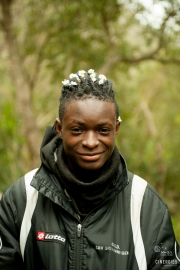 Keep the dynamic alive and support the participants in their initiatives:
Keep the dynamic alive and support the participants in their initiatives:
- propose a meeting from time to time: for example 3 months, 6 months and 1 year after the Tour, where the participants can meet again, share their news, ideas, worries, progress…
- involve the (ex-)participants in your organization: for example as a volunteer to organize a public event or to prepare the next Heterotopia Tour
- inform the participants about what is happening in their area regarding social economy and ecology, feed their curiosity and open new roads in their learning process
- guide and support them in joining already existing networks and/or social projects
- inform them about new possibilities of European programs (EVS, Youth Exchange, Training course…) and help them find the ones matching their needs
- encourage and support them in their initiatives: to plan and organize activities, facilitate a workshop, lead a crowdfunding campaign, etc.
This extra support will require time and energy from you; be honest with yourself and with participants about what you can provide and what you cannot (even if you would like to) so you don't create frustration or disappointment. Look for allies in your network (for example a social organization or a network whose action complements yours) and put participants in contact with those organizations. Also, encourage participants to support each other after the Tour – if you have done a successful preparation and team building Tour, they will naturally feel part of a team and will keep creating something together.
How to assess the tour's impacts and make them durable ?
How to assess the project’s impacts on participants in the long run
In order to assess impacts, you will have to identify and evaluate the change that happened in the participants’ life after the Tour, following a timeline and a cause-effect pattern: The Participant and their reality before the Tour –> Heterotopia Tour –> Change in the participant (new knowledge and skills, information on opportunities, changed behavior and attitudes, changed habits, changed relationship-network, etc.) –> Change in the reality and life of the participant, triggered by the participant themselves
Hence the changes that are happening in the life of the participant thanks to the change IN the participant that was caused by the Tour is the IMPACT.
As described before, you can already assess the level and type of development of the participant right after the Tour, but still it will be too early to see how and to which extend each participant will put in practice the new abilities in their own reality. For this reason we suggest a three-step assessment method for the evaluation and reinforcement of impact:
- Assessment after 2 weeks-1 month:
Following the guidelines of the “Hero’s Journey” Tool proposed under “Activities/schedule” sub-chapter, you can analyze the following aspects: To what level participants have reached the change they wanted to see in themselves? How did this changed their view on their own life, on their challenges and possibilities? Since they came back home from the Tour, have they put in practice their competencies, have they introduced changes in their daily routine?
Putting in practice in your ordinary life things that were easy to do in a special setting is difficult. It requires effort, change of habits, sometimes brings conflicts with other people. For this reason it is necessary to encourage and motivate participants at this phase of the follow-up.
- Assessment after 2-3 months:
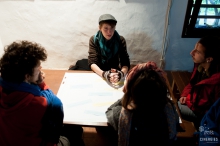 Try to discover whether participants have put in action new ideas or initiatives, bringing changes to their life and/or to the society (even small ones!).
Have they started to look for additional information about the topics they were passionate about? Have they asked help to implement their ideas? Did they continue their discovery about the topics of the project?
If they have not initiated things by themselves, have they participated in someone else’s initiative or project?
Try to discover whether participants have put in action new ideas or initiatives, bringing changes to their life and/or to the society (even small ones!).
Have they started to look for additional information about the topics they were passionate about? Have they asked help to implement their ideas? Did they continue their discovery about the topics of the project?
If they have not initiated things by themselves, have they participated in someone else’s initiative or project?
If participants have been passive since the Tour, investigate the reason(s) of it and try to discuss with them which are the obstacles that prevents them to take a step forward. Offer guidance and support if needed, but remind them that they are responsible for the changes they want to see.
- Assessment after 6-9 months:
Some mid- and longer-term impacts that you can already assess after 6-9 months: How the participants’ relationship network changed? Do they have better access to opportunities to improve their quality of life? Have they started to take initiatives? Are they getting involved in changing in their realities? Have they become more active in society? Are they more participative? Have they guided someone from their local community (who hasn’t participated in the Tour) towards opportunities and information? Have they started a new project, or a personal project (studies, work, change of lifestyle etc.) inspired by the Tour?
- Assessment +1 year later
It is a good opportunity to organize an informal gathering with the participants one year after the Tour – often a nostalgic moment followed by sharing of how everyone is doing. In one year, you can really see how the project effected the people, especially the youngsters.
Still, remember that not everyone has the same pace when changing – some participants will remember what they have learned only long after you are not keeping contact anymore. Accept it and trust that every seed you plant will eventually grow.
Evaluation of the Tour’s impacts on the partners, the hosts and the local communities
We invite you to set a range of indicators to evaluate whether the Heterotopia Tour had an impact on the partners, the hosts and the communities, and to which extent. The following checklist may help you:
Impact on implementing partners
- Have the network of partners widened?
- Have partners designed new projects, inspired by the Tour and/or by new partnerships?
- Have partners increased the number of their beneficiaries thanks to the Tour and its dissemination?
- Have partners learned and put into practice new, sustainable ways to manage their organizations?
- Have partners become more eco-friendly in their practices? (e.g. more eco-friendly working environment, more eco-friendly implementation of activities and projects, etc.)
- Have partners increased the number of their supporters, have they reached out to policy makers?
- Have partners increased their pedagogical and management skills?
Impact on local partners
- Have local partners reached a wider visibility thanks to the Tour?
- Have local partners got new ideas and new energies thanks to the Tour?
- Have the Tour contributed to the development of infrastructures (eco-buildings etc.) that can be used in the future by the partner?
- Have local partners adopted good practices learned during the Tour to their work? (e.g. receiving voluntary work in exchange for accommodation etc.)
- Have local partners increased and strengthened their network of people and organisations?
Impact on local communities
- Have participants transferred their knowledge and new competencies to their families, friends, and to other people in their local community?
- Have some of the households of the local communities started to change some habits (even small ones), e.g. buying local food, reducing use of energies, recycling etc.?
- Have decision and policy makers of the local communities started to support eco-friendly projects and/or invested in campaigns on sustainability?
- Have other organizations from the local community initiated projects on the topic, have they adapted more sustainable practices in their work?
- Have members of the local communities gained new information on opportunities for them, thanks to the participants? Have they took advantage of services, activities, or participated in projects?
- Is there a reinforced network and collaboration between for-profit organisations (shops, sellers, service providers etc.) who follow certain ethical guidelines (fair trade, local products, respecting rights of the workers etc.)?
- Has the financial capacity of those product and service providers increased thanks to the project?
How to share the experience and spread the main results ?
We address important topics during the Tours, topics that are a cause of concern for many members of society. Since then, we believe it's crucial that we share our experiences and that the knowledge and skills we acquire during the Tour should be transferred to others around us.
To reach this objective, you need to define an efficient strategy by asking yourself the following questions: What do we want to share? Which audiences do we want to reach? What could be the best way to do it? Which tools and channels should we use?
Peer-to-peer trainings: a cornerstone of knowledge transmission
One good practice is to exchange knowledge between an organization which already has implemented a Tour with success, and one which hasn't yet but intends to is “peer-to-peer trainings”. This method offers a dynamic transmission, with a community-based approach: it creates space for transmitting not only the methodology but also the values of the Tour, and to connect objectives and ideas together, which connect the participating people. Peer-to-peer trainings also enrich the theoretic knowledge by connecting with the experience of the learners through (audio)visual tools, testimonials, demonstrations etc. This methodology supports the participants to have a holistic understanding on the social, educational, political and economic aspects of the Tour, linking it to real-life experience and tangible results.
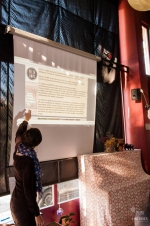 In order for the training to reach its objectives, we recommend to limit the number of participants (12 to 15 persons maximum at a time) so that there is space for everyone to express, interact, observe, absorb and co-create.
In-depth training should include a practical exercise so that learners can experiment the method and get familiar with it. Ideally, these trainings rely on the “learning by doing” methodology: youth and social workers (facilitators, educators, trainers) should in the first place experience the Heterotopia Tour in order to develop a sensitive approach of it, resembling the experience that the participants will get later. Then, by mixing theory and practice, they will get the opportunity to master the tool, so that they can better implement it according to their context and target groups.
In order for the training to reach its objectives, we recommend to limit the number of participants (12 to 15 persons maximum at a time) so that there is space for everyone to express, interact, observe, absorb and co-create.
In-depth training should include a practical exercise so that learners can experiment the method and get familiar with it. Ideally, these trainings rely on the “learning by doing” methodology: youth and social workers (facilitators, educators, trainers) should in the first place experience the Heterotopia Tour in order to develop a sensitive approach of it, resembling the experience that the participants will get later. Then, by mixing theory and practice, they will get the opportunity to master the tool, so that they can better implement it according to their context and target groups.
Less intensive peer-to-peer trainings can also be a tool to introduce practitioners to the concept of Heterotopia Tours: shorter-term seminars or local, national or international training courses can be an opportunity to do so. They will enable experience sharing between practitioners in the youth and social field and can offer to each counterpart an opportunity to improve their action, being inspired by the other.
Public event as an opportunity to reach out to a wide audience on a local scale
Another way to broadcast the project's results and raise awareness about the topics of the Tour is to organize a public event.
A public event enables you to reach out to a new audience, including people that are not so familiar with the topics of sustainability, community living or social economy. For this reason the design of the event should ensure an easy access and connection with the audience, and create curiosity.
Whatever its scale, your event should include participative and inclusive activities, such as oral testimonies from participants of the Tours, photos or film screenings, round table conversations and practical workshops for which no technical or educational background is required.
Organizing an event is not an easy job (some make a living of it after all!). Consider any event as an entire project, defining its objectives, the activities to reach them, logistical requirements, financial needs, etc. Ask yourself:
- At whom is my event geared? How many people would I like to gather?
- When should I implement it so that my audience can join? (at the evening, during a week-end, at the beginning of the holiday season?)
- Where could it take place? Can the venue host the event in case of rain or bad weather?
- Which activities will be proposed? How many people may attend each of them?
- Will I need some specific equipment or material for the activities to be held?
- Do I need signs or instructions for the people to understand what is happening when, where and how?
- Should I decorate the room in any way?
- Will the access to the event be free or will people be asked for a financial contribution? If yes, for which activities and in which way?
- Will families be welcome? If so, how will I make sure the event is child-friendly?
- Do I want to sell drinks or food? Which quantities? At which price and how? Do I need an authorization for it from the local authorities?
- Will I require the help of volunteers? How will I thank them for their efforts (for example by offering them a few drinks or a meal during the event)?
- Will I ask musicians to play, artists to perform? What will be the deal between us?
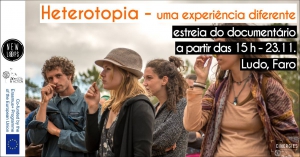 A well-prepared event (especially from a logistical point of view) will enable you to focus on the content you want to share and to be fully available for the people who will attend it.
A well-prepared event (especially from a logistical point of view) will enable you to focus on the content you want to share and to be fully available for the people who will attend it.
Involving the participants of the Tour in the event is a great follow-up activity, because they can acquire additional skills and gain confidence in their abilities.
As it might be their first time organizing a public event or presenting something in front of an audience, you should provide them with guidelines and support so they can feel more confident and ready to meet the challenges they have chosen for themselves.
Make the Internet your ally!
Taking into consideration the enormous potential of the web for connecting people, we advice you to build online communication into your dissemination strategy.
At first, plan when, where, to whom and through which channels you will spread your results. Identify the most used communication tools in your area, analyze the habits of people, think about what could attract your audience, identify networks through which you can share what you learnt. Test your assumptions, ask the people around you, especially people among your target group(s). Then only and only then, you can begin creating digital contents to share online on a channel that will enable you to meet the challenge.
Keep in mind that we are in an era of overwhelming information flow, limited attention spans and multiplicity of access devices: your narrative (either about the methodology you used or the emergent sustainability initiatives you visited) should be dynamic, engaging and (ideally) use a variety of mediums if you intend to reach a wider audience.
Don't loose sight of realities and make sure you remain in line with your objectives, skills and ethics when designing your online communication and dissemination strategy. Define the extend of your production and anticipate the skills, time and resources each output will require. Look for partners to work at your side if you believe it is worth it.
Always remember that internet is just a tool, a channel, which may help you to share your experience with others. Then, your dissemination strategy online can take various shapes.
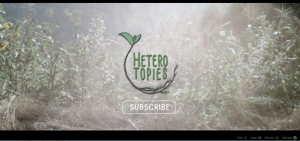 In the case of the Idea(l)s in Action project, we have set up a partnership with documentary film-makers to produce high-quality video coverage of the projects we visited and on the Heterotopia Tours in themselves. We have chosen a storytelling-method and a shape for the video-reportages which enable us to broadcast the contents on various channels and which contribute to directly involve the audience. (We wanted not only to inform but also to engage the people, by providing them the agency regarding their choices of which topics they want to explore and how they want to use the information).
In the case of the Idea(l)s in Action project, we have set up a partnership with documentary film-makers to produce high-quality video coverage of the projects we visited and on the Heterotopia Tours in themselves. We have chosen a storytelling-method and a shape for the video-reportages which enable us to broadcast the contents on various channels and which contribute to directly involve the audience. (We wanted not only to inform but also to engage the people, by providing them the agency regarding their choices of which topics they want to explore and how they want to use the information).
To access to the HETEROTOPIES plateform: www.heterotopies.net.
You could also produce articles, a fanzine, a photo coverage (together with the participants or on your own) and publish them on your website and social media channels. Another way could be to contact online local media producers to write about the concept and experience of Heterotopia Tours or get an invitation for a radio broadcast to speak about the project. At the end of the day, it will be up to you to decide which will be the best option for you.
Just one more piece of advice before we let you go: when we are talking about digital tools and channels, we often forget to think about the maintenance and the service we need for the content to remain available online. Please, take them into consideration! It might cost you a lot in the long run depending the choices you made. For a website for example, how much will hosting it cost you per year and who will support this expense? Likewise, do you master the technical aspects of the media you select or would you need the help of a webmaster / a service provider? Can you afford this technical support on the long term?
Last but not least, think about the intellectual property of what you produce. Of course we advocate for a free access online of any content, but still you may tell the people they can do or not! Have a look to the Creative Commons Licences (https://creativecommons.org/): you may find there what you're looking for.